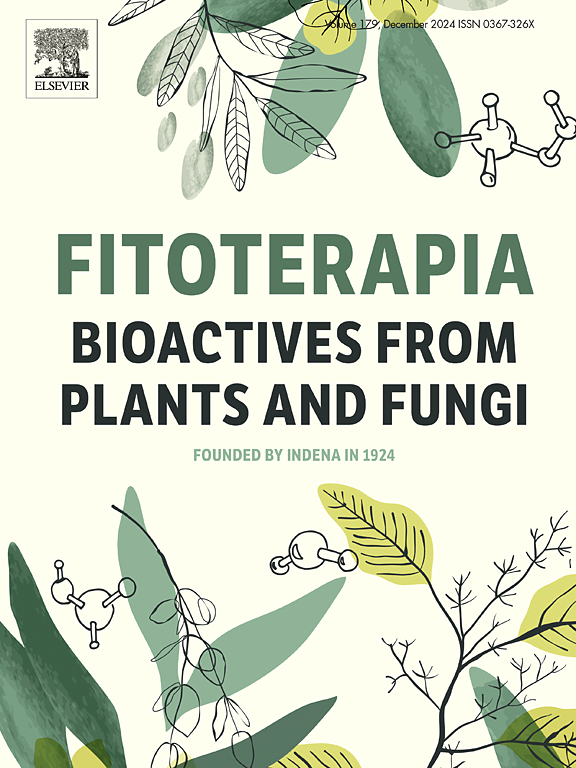Non-targeted metabolomic analysis of Xueshuantong injection in patients with STEMI
IF 2.6
3区 医学
Q3 CHEMISTRY, MEDICINAL
引用次数: 0
Abstract
Xueshuantong injection (XST) is a widely used traditional Chinese medicine for the treatment of cardiovascular diseases, particularly in the context of acute ST-segment elevation myocardial infarction (STEMI). This study aimed to explore the therapeutic mechanism of XST on STEMI by conducting a metabolomics analysis of plasma samples from 23 patients with STEMI. The patients were divided into a control group (13 patients) and an experimental group (10 patients), both undergoing emergency coronary intervention (PCI) and standardized drug therapy. The experimental group received XST for 7 days. The results demonstrated that XST can improve ventricular remodeling by modulating 71 different metabolites. Metabolic pathway enrichment analysis revealed significant enrichment in several pathways, including caffeine metabolism, phenylalanine, tyrosine, and tryptophan biosynthesis, as well as starch and sucrose metabolism. Further analysis suggested that the protective effect of XST on STEMI patients might be attributed to the regulation of the PI3K-Akt signaling pathway, MAPK signaling pathway, Ras signaling pathway, and lipid metabolism and atherosclerosis. Molecular docking technology confirmed that the main component of XST has high binding activity and stable docking conformation with key targets for treating STEMI. These findings contribute to a better understanding of the therapeutic potential of XST for treating STEMI.

血栓通注射液对STEMI患者的非靶向代谢组学分析。
血栓通注射液(XST)是一种广泛用于治疗心血管疾病,特别是急性st段抬高型心肌梗死(STEMI)的中药。本研究旨在通过对23例STEMI患者血浆样本进行代谢组学分析,探讨XST对STEMI的治疗机制。将患者分为对照组(13例)和实验组(10例),均行急诊冠状动脉介入治疗(PCI)和规范化药物治疗。实验组接受XST治疗7 d。结果表明,XST可以通过调节71种不同的代谢物来改善心室重构。代谢途径富集分析显示,在咖啡因代谢、苯丙氨酸、酪氨酸和色氨酸生物合成以及淀粉和蔗糖代谢等几个途径中都有显著富集。进一步分析表明,XST对STEMI患者的保护作用可能与调节PI3K-Akt信号通路、MAPK信号通路、Ras信号通路以及脂质代谢和动脉粥样硬化有关。分子对接技术证实,XST的主要成分与治疗STEMI的关键靶点具有高结合活性和稳定的对接构象。这些发现有助于更好地理解XST治疗STEMI的治疗潜力。
本文章由计算机程序翻译,如有差异,请以英文原文为准。
求助全文
约1分钟内获得全文
求助全文
来源期刊

Fitoterapia
医学-药学
CiteScore
5.80
自引率
2.90%
发文量
198
审稿时长
1.5 months
期刊介绍:
Fitoterapia is a Journal dedicated to medicinal plants and to bioactive natural products of plant origin. It publishes original contributions in seven major areas:
1. Characterization of active ingredients of medicinal plants
2. Development of standardization method for bioactive plant extracts and natural products
3. Identification of bioactivity in plant extracts
4. Identification of targets and mechanism of activity of plant extracts
5. Production and genomic characterization of medicinal plants biomass
6. Chemistry and biochemistry of bioactive natural products of plant origin
7. Critical reviews of the historical, clinical and legal status of medicinal plants, and accounts on topical issues.
 求助内容:
求助内容: 应助结果提醒方式:
应助结果提醒方式:


